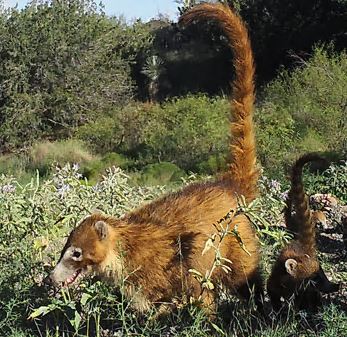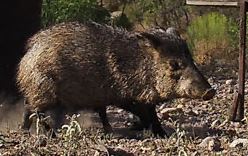Finished! Looks like this project is out of data at the moment!
04/16/25: Thanks for your hard work! Check back for more data from Armendaris in May. Also note - this project recently migrated onto Zooniverse’s new architecture. For details, see here.
Research
Wildlife in the Southwest
The Southwest Region managed by the US Fish and Wildlife Service encompasses the states of Arizona, New Mexico, Oklahoma, and Texas. This region is home to a great diversity of ecosystems and wildlife, including three of the top five US states for wildlife species diversity (in order: #2 Texas, #3 Arizona, and #4 New Mexico). This is due in part to the incredible variety of habitats spanning the region, ranging from alpine forests to lowland deserts, with grasslands, riparian (riverside) forests, shrublands, and more in between.



Among the diversity of wildlife in the southwest are many endemic (found nowhere else in the world) species, as well as many threatened and endangered species. People also have many values for the wildlife of the southwest, from hunting to culture and aesthetics. Therefore, wildlife managers take the management of this area very seriously!
Camera Traps
Motion-triggered trail cameras, a.k.a. "camera traps," are a powerful tool for monitoring wildlife. The US Fish and Wildlife Service (USFWS) uses them in a variety of contexts: for example, estimating population sizes of many species, tracking the movements of individuals from rare species, calculating survival rates at nest and den sites, and determining whether animals have returned to an area where a disturbance has occurred or habitat has been restored.
Camera traps can be placed in remote locations and capture observations of animals that are nocturnal, secretive, or otherwise hard for people to find. They also have the benefit of being less frightening to most animals than a human observer-- in fact, sometimes you will find images of animals examining the camera up close!

However, one big downside of camera traps is that they can generate a lot of images that can be very time consuming to sort through. Many researchers, including other projects on Zooniverse, have worked to solve this problem through machine learning.
Machine Learning
What if we could automatically scan an image and have a computer spit out the number and species of animals present? That is our goal! We are working to develop an algorithm to do this work for us. However, these algorithms need a lot of examples of what a "coyote" or an "elk" looks like, in a variety of different contexts. Humans have to provide these examples to the computer-- we call this training data. This is where Zooniverse users like you come in: you will be looking at images taken by camera traps and labeling all the animals you can see. These labels will then be given to the algorithms to teach them how to find and identify animals automatically.
Beyond Identification
Our team is also working on a method to estimate how far away an animal is from the camera, in addition to identifying its species. This will help researchers at USFWS estimate population density.